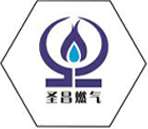
Nov . 14, 2024 14:06
Back to list
safety relief valve
Understanding Safety Relief Valves An Essential Component in Pressure Management
Safety relief valves (SRVs) play a critical role in industrial processes by protecting equipment and personnel from the dangers associated with overpressure scenarios. These devices are designed to release excess pressure from a system to prevent catastrophic failures that could lead to explosions, system damage, or hazardous situations. They are vital in various industries, including oil and gas, chemical processing, power generation, and many others.
How Safety Relief Valves Work
At its core, a safety relief valve functions by automatically opening to release pressure when the pressure in the system exceeds a predetermined limit, also known as the set pressure. Once the pressure drops back to an acceptable level, the valve closes again, ensuring that the system operates safely and efficiently. There are two primary types of safety relief valves conventional and pilot-operated.
1. Conventional Safety Relief Valves These are straightforward in design, typically featuring a spring-loaded mechanism. When the pressure exceeds the set point, the force exerted by the gas or fluid overcomes the spring tension, causing the valve to open. The valve will remain open as long as the pressure remains above the set point and will close once it falls below it.
2. Pilot-Operated Safety Relief Valves These valves utilize a pilot system to control the main valve operation. They can achieve higher flow rates and provide better pressure control. When the system pressure rises, it activates a pilot valve that then opens the main valve, allowing for a more efficient release of pressure. They are helpful in systems where pressure fluctuations are common and more precise control is required.
Importance of Safety Relief Valves
The significance of safety relief valves cannot be overstated
. In industrial operations, equipment must maintain certain pressure levels to function optimally. If the pressure rises above these levels due to thermal expansion, failure of other pressure control devices, or changes in process conditions, the risk of equipment failure increases. This could lead to serious accidents, equipment damage, and potential harm to personnel.safety relief valve

Safety relief valves not only protect equipment but also ensure compliance with safety regulations. Most industries are governed by stringent safety laws that mandate the use of SRVs to mitigate risk. By implementing these valves, companies demonstrate their commitment to safety standards and the protection of their workforce.
Selecting the Right Safety Relief Valve
Choosing the proper safety relief valve for a specific application requires careful consideration. Key factors include the type of fluid or gas being handled, the pressure range, the temperature of the system, and the required flow rate. Additionally, understanding the process dynamics and potential for pressure fluctuations is crucial in selecting a valve that will perform effectively.
It is also essential to consider the materials used in the valve construction, as they must be compatible with the media being handled. Corrosive materials, high temperatures, and other operational demands may necessitate specialized materials to prevent failure.
Maintenance and Inspection
Regular maintenance and inspection of safety relief valves are critical to ensure their reliability. Over time, factors such as corrosion, sediment accumulation, and wear can affect a valve’s performance. Routine checks should be carried out according to manufacturer guidelines and regulatory requirements, including verifying the set pressure, checking for leaks, and testing the operation of the valve.
In conclusion, safety relief valves are indispensable devices in the realm of pressure management, safeguarding both equipment and personnel from the potentially devastating consequences of overpressure scenarios. By understanding how they operate, their importance in various industries, and how to properly select and maintain them, stakeholders can significantly enhance safety and efficiency in their operations. Responsible management and adherence to best practices surrounding safety relief valves are essential not only for regulatory compliance but for fostering a proactive safety culture in industrial environments.
Next:
Latest news
-
Safety Valve Spring-Loaded Design Overpressure ProtectionNewsJul.25,2025
-
Precision Voltage Regulator AC5 Accuracy Grade PerformanceNewsJul.25,2025
-
Natural Gas Pressure Regulating Skid Industrial Pipeline ApplicationsNewsJul.25,2025
-
Natural Gas Filter Stainless Steel Mesh Element DesignNewsJul.25,2025
-
Gas Pressure Regulator Valve Direct-Acting Spring-Loaded DesignNewsJul.25,2025
-
Decompression Equipment Multi-Stage Heat Exchange System DesignNewsJul.25,2025

